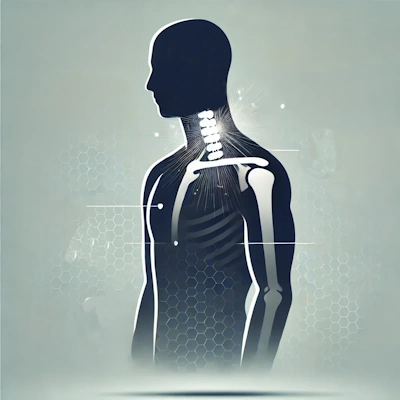Most people think serious injuries only come from high-speed collisions. But low impact car accidents—often happening at speeds under 10 mph—can sometimes cause hidden injuries that show up days or even weeks later. Below, we unpack why these minor collisions shouldn’t be brushed off, how to handle insurance and legal issues, and what you can do to protect yourself and your rights.
Quick Links

What Are Low Impact Car Accidents?
“Low impact car accidents” typically happen at slow speeds—such as in parking lots, residential streets, or stop-and-go rush hour traffic. Although vehicles may show minimal or no physical damage, the occupants can sustain injuries that aren’t immediately visible.
- Speed Threshold
These collisions usually occur at speeds under 10 mph. At first glance, that might sound insignificant, but even minor momentum can cause major strain on the body. - Common Scenarios
- Backing out of a driveway or parking space
- Slow-speed rear-end collisions at red lights
- Traffic jams where cars start and stop frequently
- Residential neighborhoods with low posted limits and sudden stops
- Misleading Appearances
Often referred to as “fender-benders,” low impact car accidents may look harmless. However, the real issue lies in how your body absorbs the force when it’s unprepared—or in a slightly twisted or turned position.
Why Low Speed Doesn’t Always Equal Low Risk
- Soft Tissue Damage
Even at speeds under 10 mph, ligaments, tendons, and muscles can be jolted violently. Whiplash—a sudden, forceful movement of the neck—is among the most common injuries and can lead to persistent stiffness, headaches, and discomfort. - Delayed Symptoms
The adrenaline rush during and immediately after a collision often masks pain. It can take hours, days, or weeks for symptoms like headaches, dizziness, or numbness to become obvious. - Psychological Toll
It’s not just about physical injuries. Anxiety, fear of driving, or post-traumatic stress can develop after any collision—even if the crash seemed minor at the time. - Vehicle Damage vs. Human Injury
Modern car bumpers and frames are engineered to absorb low-speed impacts, making them appear undamaged. However, that energy can transfer to you, stressing neck muscles, spinal discs, or other vulnerable areas.
Hidden Injuries: Signs and Symptoms to Watch For
- Neck and Shoulder Pain
A sore or stiff neck can indicate whiplash. You might also feel pain radiating into your shoulders or arms. - Back Discomfort
Low back pain could mean a spinal disc issue, muscle strain, or ligament sprain. - Headaches or Dizziness
Often a sign of a mild concussion. If left untreated, it can worsen and affect concentration, sleep, and mood. - Tingling or Numbness
Nerve compression or irritation can cause tingling sensations in your arms, hands, legs, or feet. - Emotional Distress
Inexplicable anxiety, insomnia, or fear of being in a car can suggest lingering psychological effects.
If you experience any of these, don’t ignore them. Seek medical help, even if you initially felt fine after the collision.
Legal and Insurance Implications
1. Document Everything Immediately
- Photograph Vehicles & Scene
Take clear pictures of all cars involved, any visible damage, road conditions, and relevant traffic signs. - Get Witness Statements
If bystanders saw the collision, collect their contact information. They can help corroborate details if there’s a dispute later. - File a Police Report
Even for low-speed collisions, official documentation is invaluable. The report can establish that an incident occurred and detail the circumstances.
2. Talk to a Medical Professional
- Prompt Medical Evaluation
Not only does this protect your health, but it also creates a record that can support any insurance claim. Delays can complicate your ability to prove that injuries resulted from the crash. - Follow-Up Appointments
If the doctor recommends physical therapy or additional diagnostic tests (like an MRI), follow through. Skipping care can be used by insurers to claim you weren’t truly hurt.
3. Dealing with Insurance Companies
- Low-Impact? Low Settlement Offers
Insurers may argue that without big vehicle damage, there’s no serious injury. This is a common tactic to minimize payouts. - Documentation is Key
Keep receipts, medical reports, and detailed notes about any symptoms. The stronger your paper trail, the harder it is for an insurer to argue the injuries aren’t related. - Avoid Early Settlements
Quick offers often don’t reflect the true cost of medical bills, ongoing treatment, and missed work. Hold off on signing anything until you know the full extent of your injuries.
4. When to Contact an Attorney
- Prolonged Symptoms
If whiplash or back pain persists, or if your medical bills start stacking up, it’s wise to consult a legal professional. - Denied or Lowball Claims
If the insurer denies your claim or offers a settlement far too low, a lawyer can help negotiate or represent you in court. - Complex Liability
If fault is not clearly established, or multiple vehicles are involved, an attorney can clarify liability, help gather evidence, and navigate local laws.
Common Myths About Low Impact Car Accidents
- “No Damage to My Car Means I’m Fine”
Not necessarily. Cars are built to withstand minor collisions. Your body, however, is not. - “I Don’t Have Pain Right Now, So Nothing’s Wrong”
Injuries can take days or even weeks to surface. Don’t assume you’re in the clear immediately. - “Insurance Automatically Covers My Medical Bills”
Coverage varies by policy and state. You may need to provide significant proof to get fully reimbursed. - “Hiring a Lawyer Will Make Me Look Greedy”
Seeking proper legal guidance is about ensuring you’re fairly compensated for actual damages and injuries—nothing more.
Step-by-Step Action Plan After a Low Impact Collision
- Check Safety
Ensure you and your passengers are out of harm’s way. If necessary, call an ambulance. - Gather Information
Exchange insurance details with the other driver. Take photos of the scene, note the time and location, and look for witnesses. - Notify the Police
Even for minor collisions, an official report helps formalize the incident. - Seek Medical Evaluation
Book an appointment with your doctor or visit an urgent care clinic to rule out hidden injuries. - Notify Your Insurer
Provide factual details of the collision but be cautious about admitting fault or speculating on injuries until you have a professional assessment. - Follow Treatment Recommendations
Whether it’s medication, physical therapy, or more extensive care, follow the plan to improve recovery and document your ongoing medical needs. - Consult a Personal Injury Attorney (If Needed)
If you’re dealing with persistent injuries or uncooperative insurers, legal help may be essential.
Long-Term Effects of Low Impact Car Accidents
- Chronic Pain
Soft tissue damage can create long-term issues if not properly healed. Ongoing discomfort can reduce mobility and overall quality of life. - Mental Health Challenges
Anxiety around driving or traveling can linger. Some individuals may need therapy or counseling to rebuild confidence behind the wheel. - Financial Burden
Repeated medical appointments, physical therapy sessions, and reduced work capacity can strain finances if insurance coverage is inadequate or delayed. - Lifestyle Adjustments
Chronic pain or limited mobility might force changes to daily routines—requiring new ergonomic setups at work, limiting certain physical activities, or necessitating assistive devices.
Preventing Low Impact Car Accidents
- Stay Alert in “Safe Zones”
Ironically, places like parking lots or slow residential streets can lull drivers into carelessness. Remain vigilant. - Use Defensive Driving
Keep a safe following distance, check mirrors frequently, and stay aware of surroundings. - Regular Vehicle Maintenance
Functional brakes, responsive steering, and quality tires can all help you avoid minor collisions in stop-and-go traffic. - Proper Positioning
Adjust your seat and headrest to ensure the best posture and support. Even in a minor collision, correct headrest height can reduce whiplash risk. - Avoid Distracted Driving
Texting, phone calls, or fiddling with in-car tech significantly raise the chances of rear-ending someone at slow speeds.
Frequently Asked Questions (FAQ)
1. How slow is a “low impact” collision?
Usually under 10 mph, but even collisions as low as 5 mph can injure an unprotected neck or back.
2. My car looks fine—why should I bother with insurance?
Hidden damage is still possible, and injuries can appear later. Reporting it ensures you’re covered if pain develops later on.
3. Do I really need to see a doctor if I don’t feel pain?
Yes. A brief medical checkup could reveal early signs of strain or whiplash.
4. Why do insurance companies minimize these claims?
They often believe “minor collision = minor payout.” Comprehensive documentation counters this assumption.
5. Can I file a claim for emotional distress?
Potentially. Psychological impacts can be valid, but proving them requires medical evidence—like a diagnosis from a therapist or counselor.
6. What if the other driver insists we don’t need to call the police?
A police report can protect both parties legally. Even if damage seems minor, having an official record clarifies liability and facts.
7. Is a lawyer necessary for every low impact car accident?
Not always. If injuries are minimal and insurance covers all expenses, legal representation might be unnecessary. However, if you sense complications—like delayed injuries or insurer pushback—an attorney can be invaluable. We offer free consultations to help you understand your best option.
8. How long do I have to file a claim or lawsuit?
Time limits differ by jurisdiction. Typically it's two years in Oregon but there are many exceptions. If you’re unsure about deadlines in your case, get a free consultation. An attorney will help you understand the timeline of your matter.
Why You Should Take Action
Low speed doesn’t always mean low stakes. Low impact car accidents can lead to hidden injuries, costly medical bills, and lengthy insurance disputes. Protect yourself by seeking medical care, documenting everything, and—if necessary—working with a legal professional to ensure your rights are fully upheld.
Next Steps:
- Get Evaluated
Don’t wait for pain. Schedule an exam with a qualified medical provider. - Keep Records
Save every bill, receipt, email, and photo. - Stay Informed
If you notice lingering pain or uncooperative insurers, contact an attorney who has experience with low impact car accidents. - Follow Through
Physical therapy or rehabilitation might feel time-consuming but can prevent long-term complications.
Final Word
Even if it seems like “just a bump” now, low impact car accidents can transform into headaches—both medically and legally—if dismissed. By being proactive, documenting everything, and seeking professional help when needed, you can minimize the fallout from these deceptively simple collisions.
Disclaimer: This article is intended for informational purposes and does not constitute legal advice. Always consult a licensed attorney and medical professional for your specific situation.
We will review your case for free.
Pay us nothing unless we get you a better settlement.
We work on contingency.

